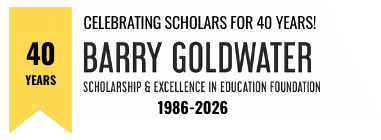Harvey Mudd College
Matthew Evans, 1996 Goldwater Scholarship recipient
Matthew Evans ’96 spent two decades working with colleagues to create a sensor that could detect the illusive gravity waves predicted by Albert Einstein 100 years ago.
On Sept. 15, 2015, detectors at two widely separated LIGO (Laser Interferometer Gravitational-Wave Observatory) sites in Livingston, Louisiana, and Hanford, Washington, simultaneously detected a chirping signal. They had detected gravity waves generated by the collision of two black holes 1.4 billion years ago.
Evans, an assistant professor of physics at Massachusetts Institute of Technology, was thrilled by the incredible news.
“We really didn’t expect to have detected anything. But after I got done with a first pass through the data, by the end of the day I was pretty sure it was real,” Evans says.
Another ripple from two intersecting black holes was recorded by LIGO in December 2015, and more ripples have been recorded since.
Evans has been working for 20 years with the goal of making an interferometer that could detect something. He says gravity waves are important in providing scientists a means of analyzing black holes—which are the remains of long-dead stars—the physical structure of neutron stars and maybe even gravity itself.
He might not have ever been involved with the LIGO project if not for the Barry Goldwater Scholarship and Excellence in Education Program. Evans left his family’s small, rural Oregon farm to attend Harvey Mudd College in Claremont, California.
“For whatever reason, I naively expected that some form of financial aid would materialize when I arrived at Harvey Mudd to help me get by,” Evans said. “The Goldwater award made a huge difference, and it is quite possible that without it, I would not have been able to finish my undergraduate degree.”
After graduating from Harvey Mudd in 1996 with a B.S. in physics, Evans earned his PhD in 2002 from California Institute of Technology, where he began working on the LIGO project.
“The project leveraged my work at Harvey Mudd, but in a different context,” he says. “I wrote LIGO’s first simulation codes, not about the astrophysics but just to make the device work. There’s a lot of physics and technology that goes into the instrument itself.”
As a graduate student and then post-doc, still at Caltech, he travelled between work locations at MIT and the two LIGO sites, creating models and designing parts. He traveled to see how his parts worked on site, then redid his model and created new parts. Before starting as a research scientist at MIT in 2007, he also aided ongoing construction of a third gravitational wave observatory in Italy called Virgo. A fourth site, in Japan, is under construction.
“I spent time doing designs and construction until 2013, trying to better isolate the devices from ground motion as well as create an active, three-layer isolation system with active feedback,” he says.
With the discovery of the first direct detections, Evans says, “We now have a new way to observe black holes, mountains on neutron stars, gravitational blasts from supernovas, remnant waves of the Big Bang …” and more.

